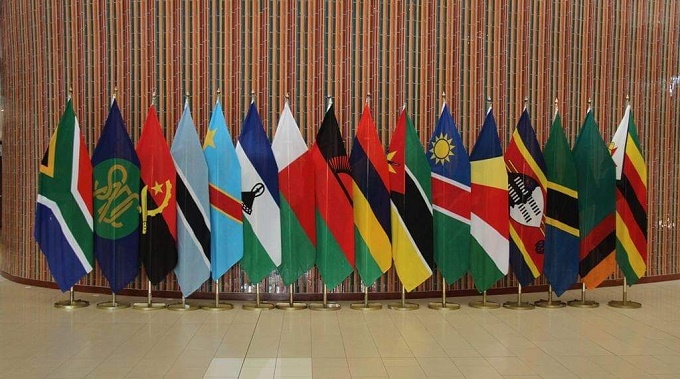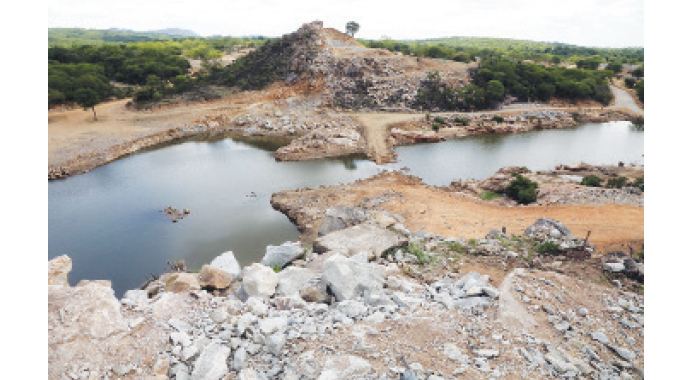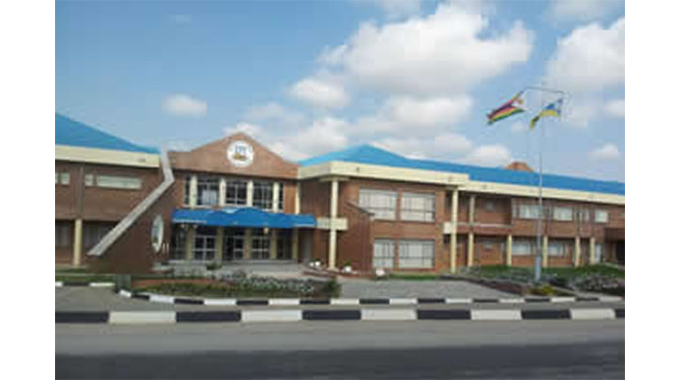
The Sunday News

Vincent Gono, News Editor
DESPITE having a strategically important geographical location linking it to South Africa and Botswana which are two regional neighbours of economic, political and social significance, Matabeleland South had for a very long time existed as one of the poor provinces of Zimbabwe in terms of development in almost all facets.
There was generally lack of investment, poor human development infrastructure such as schools, clinics, dams and an old road transport infrastructure to service the second least populated province of Zimbabwe after Bulawayo, according to the latest national census figures.
The result was that communities in the seven districts that the province mothers have majorly remained uncatered for within the country’s national boundaries. This had a ripple effect of a great trek to the two neighbouring countries (South Africa and Botswana) whose borders are metaphorically within walkable distances to look for opportunities from where they would invest in mansions and other personal acquisitions that they could not get locally. The situation has been like that for a good number of years but there is an aphorism that says nothing lasts forever.
A combination of factors ranging from political will, history and a centralised system of development divorced from community involvement that have militated against the achievement of development have been untangled with the coming of the Second Republic.
Instructive political statements that give direction to development where everyone is involved such as “ilizwe lakhiwa ngabaninilo/nyika inovakwa nevene vayo” (a country is built by its owners),”leaving no one and no place behind” began to be normalised and actualised as the fight against marginalisation started taking shape.
Infrastructure development projects that have taken forever to complete in the previous political administration were taken up and completed with resources locally and using local companies while new state-of-the-art projects were started and given deadlines that are not eternal.
A semblance of seriousness has been adopted where companies that dilly-dally with projects have often been pushed out of contracts while those doing shoddy jobs have been blacklisted. At a lower-tier level, the Government has actualised the devolution concept that is giving communities a say in the development of their areas with a lot of positive stories told on how services are now accessible especially in rural areas where clinics, schools, bridges and dams have been constructed.
There is therefore no doubt that Matabeleland South Province is in the fast lane of getting out of its old self where it was divorced from the whole into a nationally connected province whose population should have a sense of pride in belonging through owning development.

His Excellency, President E D Mnangagwa
Although it is work in progress, the elderly, pregnant mothers, school children and those suffering from chronic diseases including HIV patients who require medication and constant check-ups bear testimony of how they can now easily access clinics, health centres and schools from a history of agony where they would travel at least eight kilometres to the nearest service provider.
To bare the development projects that the Second Republic has been working on and unpack their economic benefits, Matabeleland South Province’s Director in charge of Economic and Investment Mr Richmond Ncube told Sunday News in an interview in Gwanda recently that a lot has happened in the province in terms of development since the inception of the Second Republic.
He said although the modernisation of Beitbridge Border Post remained the headline project because of its national nature as an important enabler to trade and commerce as well as pride of national outlook to visitors, other projects such as the Tuli-Manyange Dam, Gwanda State University, Makorokoro Rural Industrial Programme, the dualisation of Beitbridge-Chirundu Highway, citrus plantation and various projects under devolution in the province’s seven districts were evidence of the serious development projection being pursued by President Mnangagwa’s Government.
Beitbridge modernisation
According to Mr Ncube, the modernisation of Beitbridge border post under a private public partnership arrangement between the Government and Zimborders Consortium remains one of the most important projects not only for the province but for the country as a whole. The project that is almost complete has totally changed the face of Beitbridge giving it a new, smart and hustle free environment.
“It is the face through which visitors into the country see everything while its economic benefits to the province and the country as a whole are many,” he said.
He said the upgraded Beitbridge border post has unlocked major spin-offs in trade and tourism. It has enhanced greater regional integration and cooperation, as outlined in the Regional Infrastructure Development Strategy.

SADC
The project is seen as a milestone achievement in the operationalisation of the Integrated Beitbridge Development Master Plan and stands out as one of the key infrastructure projects that has been implemented by the Second Republic.
Since its upgrading which is done at a cost of US$300 million, it has facilitated the efficacy in the discharge of statutory functions of various border stakeholders as well as link seamlessly with the regional economies along the North-South Corridor.
The project took off in 2018 and it encompasses construction and upgrading of terminal buildings, vehicle inspection and parking bays, 220 housing units for staff members and a fire station.
Additionally, office space, information and communication technology, surveillance technology, as well as truck and baggage scanners have also been modernised as part of the project. The project, Mr Ncube says, has proved its potential to unlocking endless innovative economic opportunities for the province and the country.
“Besides smooth movement of goods and people in the Sadc region through the upgraded Beitbridge Border Post, it has contributed significantly to the overall industrialisation agenda and economic growth of the province. The developments have transformed the border town tremendously creating a lot of opportunities for the enterprising locals,” he said.
The developments in the border town, he said, were also met with an increasing demand for staff accommodation for the various departments and the response was the construction of the 220 housing units.
“A fire station was also constructed and equipped while challenges of water are going to be a thing of the past as a more than 11 000 megalitre- water reservoir has been constructed. We have also put in place an animal plant and quarantine facility, and a sewer oxidation dam. So, generally all the basic infrastructure has been brought up to standard and there is no more excuse in terms of efficiency and we are happy our travellers are testifying to the ease of going through the border and its transformed environs,” added Mr Ncube.
Tuli-Manyange Dam
The construction of the Tuli-Manyange Dam in Gwanda District, is taking shape. The project is one of the major highlights of Second Republic’s commitment to improve the lives of people in the traditionally thirsty and drought-prone Matabeleland South Province. The dam is now 35 percent complete and Mr Ncube said communities in surrounding areas were upbeat that the dam will finally put an end to their water woes and spur economic activity and growth while resolving food insecurity issues that have been haunting them for decades.
Once complete, Tuli-Manyange, which has a holding capacity of 35 million cubic metres, is expected to provide raw water for irrigation purposes and boosting food security in Matabeleland South Province where effects of climate change have been taking a toll on communities.

Tuli-Manyange Dam work site
The dam, which is expected to be complete by the end of the year is set to provide relief to Matabeleland South which is generally a low rainfall region making it not suitable for crop agriculture without supplementary water.
Therefore, the construction of Tuli-Manyange Dam dovetails with the Second Republic’s goal to build new water bodies that will support the switch from rain-fed agriculture and help food-insecure communities through provision of water for both irrigation and fisheries.
Mr Ncube said they envision at least 2 000 hectares of land being put under irrigation once the project is complete and the dam will service Vela, Guyu Business Centre, Ntalale Business Centre, Chelesa Business Centre, Sizhubane Barracks, Manama Mission and Business Centre, Sibasa and Mankonkoni irrigation schemes.

Zimbabwe National Water Authority (Zinwa)
“The idea is to achieve rural industrialisation through the agriculture 8.0 model. So, the construction of water bodies in the province is largely going to be an enabler of that vision from where irrigation, fisheries, poultry and livestock production will thrive creating rural industrial hubs and arresting rural to urban migration. There is therefore no doubt that the livelihoods of communities in the district and the province will improve which is the import of the Second Republic’s vision 2030,” he said.
The project is implemented by the Zimbabwe National Water Authority (Zinwa) while China International Water and Electric Corporation (CWE) have been contracted to do civil works.
Makorokoro rural industrialisation presidential project
Before the advent of the Second Republic, Makorokoro community was not known beyond Mangwe. It was probably detached from programmes that are national and had lived in isolation tucked in the rural remote areas of Mangwe district and Mr Ncube testifies to the fact that even accessibility was rather a challenge.
President Mnangagwa however, knew about the existence of such a place and picked it among many for projects in poultry and nutritional gardens in pursuance of his rural industrial development vision as he walks the talk on his “leaving no one and no place behind” development philosophy.
And today, the people of Makorokoro are basking in the glory profits made from the projects brought at their doorsteps by President Mnangagwa, something that probably had never happened to them in their entire lifetime.
The President launched the Sekusile Nutritional Garden in the community and perhaps the name “Sekusile” (its now dawn) is symbolic that it is now dawn for the communities that had been left out slumbering in the darkness of development.
Built in the mould of the Marula Processing Plant in Mwenezi which is a product of the Second Republic, the Makorokoro rural industrialisation project is meant to uplift the lives of communities through the use of locally available resources.
According to Mr Ncube, the scheme has 150 beneficiaries who are all locals contributing to the attainment of food security in their village through agriculture where they are growing for consumption and for sale to other villagers at affordable prices. Not only are they contributing to food self-sufficiency, they are also contributing to improved nutrition and community healthy in general.
“There were groups that were trained in various projects from within the community through graduates from our agricultural colleges. Some were trained in poultry, fisheries and nutritional gardens. They are now majorly horticultural farmers growing cabbages, tomatoes, potatoes and even butternut while others are into poultry and aquaculture where they will start harvesting fish. This has greatly improved the people’s nutritional needs and a number of families are now able to send children to school from the proceeds of their farming ventures,” said Mr Ncube.
Light was also shone to other problems of the community such as poor roads, and low access to telecommunications network and radio transmission. In response to some of the challenges, the Government has installed a telecommunication booster, two boreholes and solar equipment and through the solar system, the community is now able to irrigate their crops while also getting clean drinking water.
Other developments
Other important developments that Mr Ncube highlighted were the coming in of Gwanda State University which he said was fronting research under the Education 5.0 model that seeks to solve community problems and create value as a catalyst to achieving Vision 2030 of an upper-middle-income economy. He said part of the province was a gold producing area and the target was to increase gold production from five tonnes to seven tonnes per annum through research and value addition at the state-of-the-art mining hub at the university.
He also lauded the various livestock programmes such as the Presidential Tick-grease where families were getting tick-grease from the Government to avert cattle deaths through January disease.
“We are generally a cattle province and the tick-grease initiative is taken seriously by the communities. It has prevented deaths from the dreaded January disease. We also have the Emergency Road Rehabilitation Programme (ERRP) where a number of our roads have been rehabilitated although more still needs to be done because of the rains,” he added.

In terms of devolution funds, Mr Ncube said it was one of the many wonders of the Second Republic that had eased a lot of lives mostly in rural areas. He said every one of their districts was doing something to improve access to services in the communities.
He also thanked the President’s engagement and re-engagement efforts saying they have seen a number of diasporans extending their willingness to invest back home, adding that they were working on improving the borders in the province such as Maitengwe and Mlambapeli to decongest the Plumtree Border Post. The province is also developing citrus plantations and processing plant as well as investing in tourism while two processing plants for amacimbi have been set up in Beitbridge.



